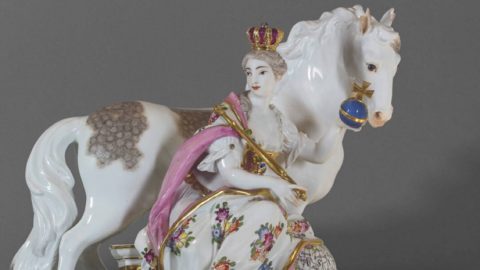From the Palazzo del Quirinale for the exhibition (13 March 2021 – 06 June 2021 – Parma) exceptionally the precious porcelains that Luisa Elisabetta di Francia and her consort Filippo di Borbone return to the Reggia di Colorno here used for ducal receptions now available for state receptions of the Presidency of the Republic. Other, equally precious porcelains from the manufactures of Meissen, Sèvres, Vincennes, Chantilly, Doccia and Capodimonte, always belonging to what was once the ducal heritage, will return "home" from the Uffizi Galleries, from the Museum of the Medici Villa in Poggio di Caiano , from the Royal Museums of Turin, accompanied by documents granted by the State Archive.
United for the first time after the dispersion of the art treasures of the Parma palaces which began in 1859, when the Duchy of Pama and Piacenza was canceled to be incorporated into the new Kingdom of Italy the following year. As a result of this, the heritage of what for centuries had been one of the most refined and international European courts passed to the House of Savoy. The furnishings, passing through Turin and Florence, largely reached the Quirinale, to furnish the Savoy palace, then the "home" of the Presidents of the Republic
It is a work conducted in the Archives, which has allowed Giovanni Godi and the group of experts who supervise the exhibition, to identify the locations where the Parma treasures have been "placed", bringing them home, even if only for the time of the exhibition .
These refined and very high quality works show how the taste at the court of the Dukes of Parma was shaped in full agreement with the French models developed in the eighteenth century, when decorative richness and a desire for ostentation accompanied the preparation of the tables of the old continent.
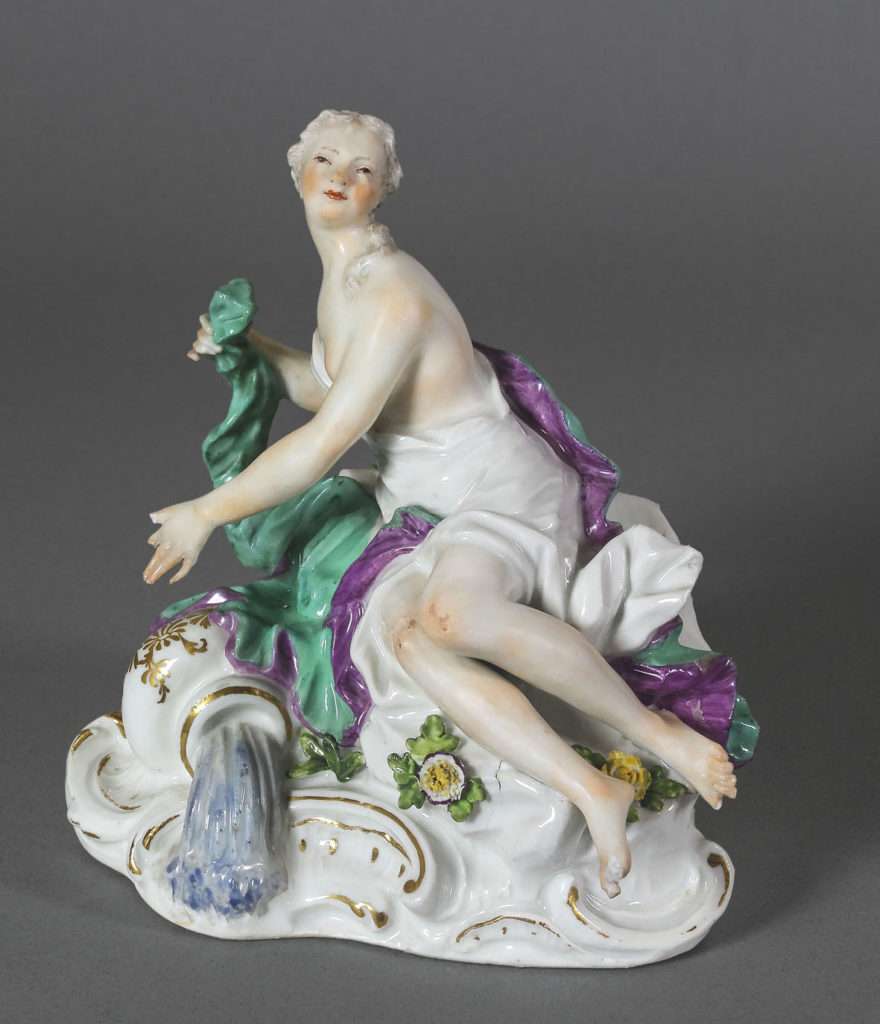
Meissen workshop: Allegory of the River, Porcelain, 15,5 cm 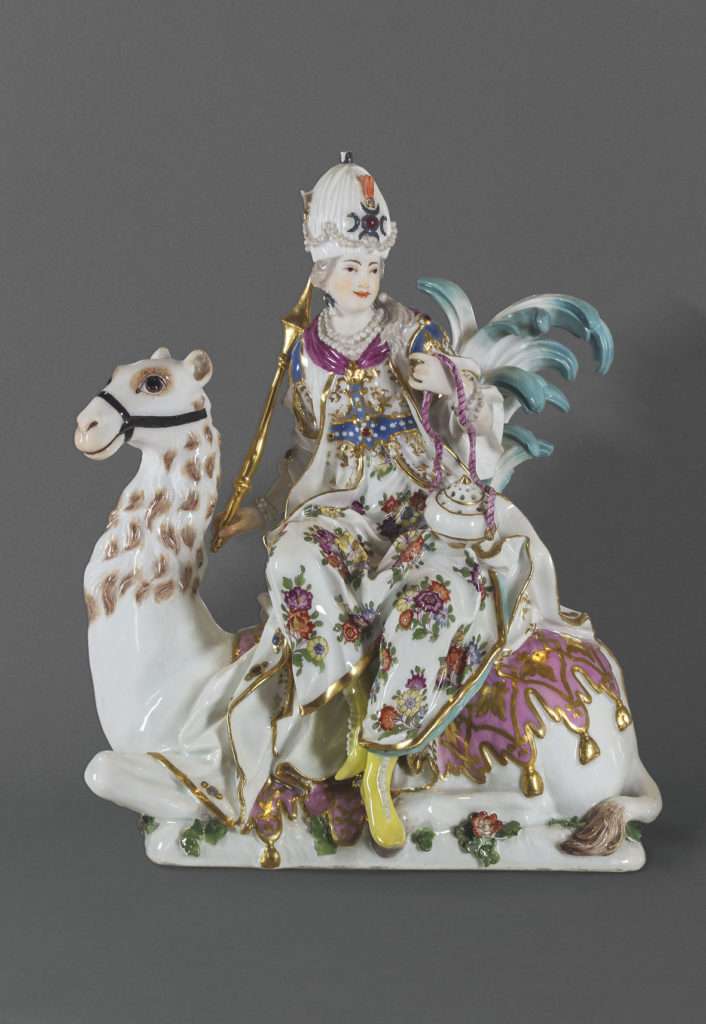
Meissen workshop: Allegory of Asia, Porcelain, 30,5 cm
The Dukes' passion for porcelain was truly absolute. Luisa Elisabetta –“Babette”, as her father, Louis XV, sovereign of France called her – was literally captivated by the exotic charm of this compact, shiny and light material, capable of giving life to objects with refined lines that helped to identify the status social status of those who owned them. In her frequent trips to Versailles, she did not neglect to make purchases at her father's expense both to equip her modest residence with suitable fashionable crockery and as a gift to her husband ("cher Pippo") who showed that he shared with her the pleasure of precious porcelain .
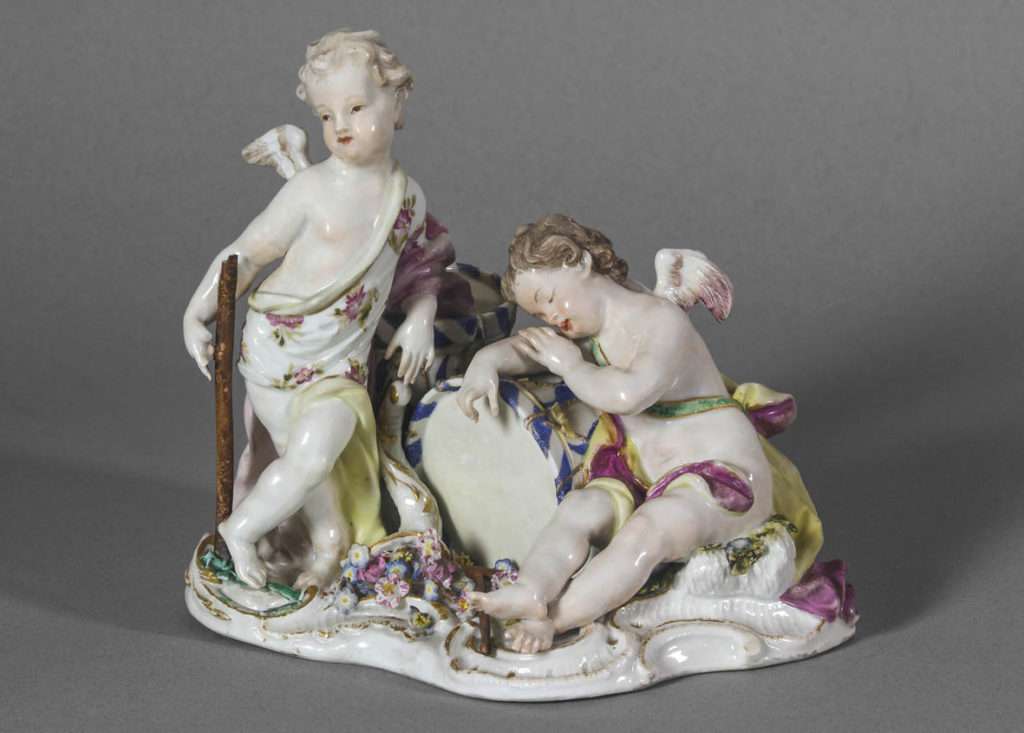
Meissen Workshop: Cupids, Porcelain, 16 cm 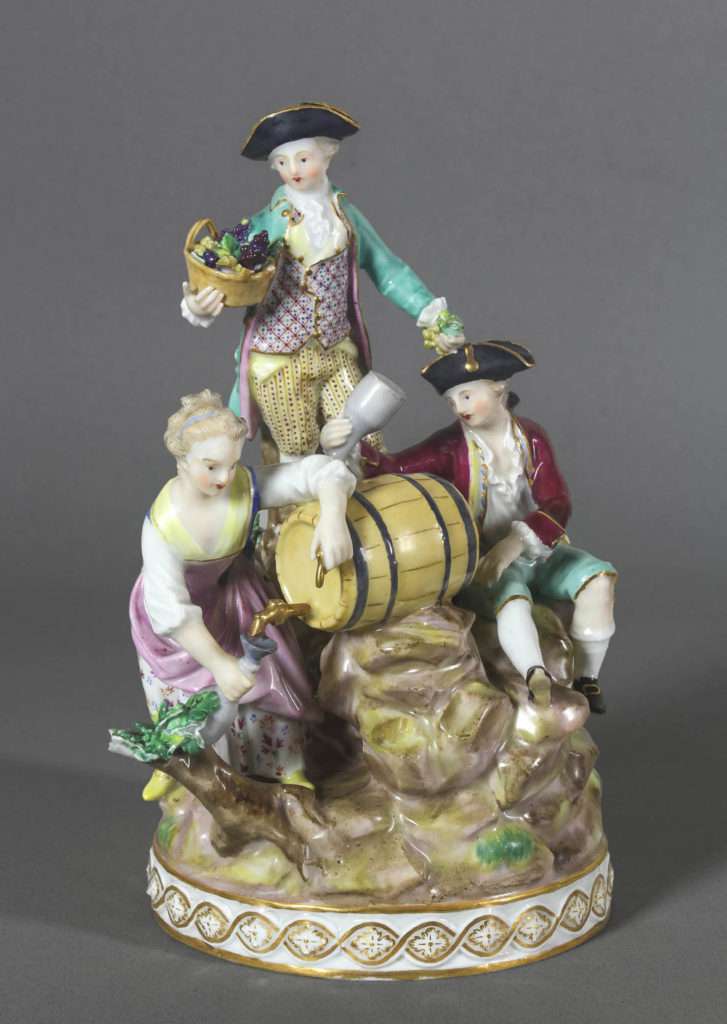
Meissen Workshop: Grape Harvesters, Porcelain, 21 cm
Thus the small Duchy acquired the best of the production of all the most prestigious European manufacturers that the Duchess personally sought out and commissioned, as confirmed by the numerous letters on display. In their residences there were porcelain objects: refined tableware, coffee sets, figurines, ice cream cups and curious objects signed Meissen, Sèvres, Vincennes, Chantilly, Doccia and Capodimonte.
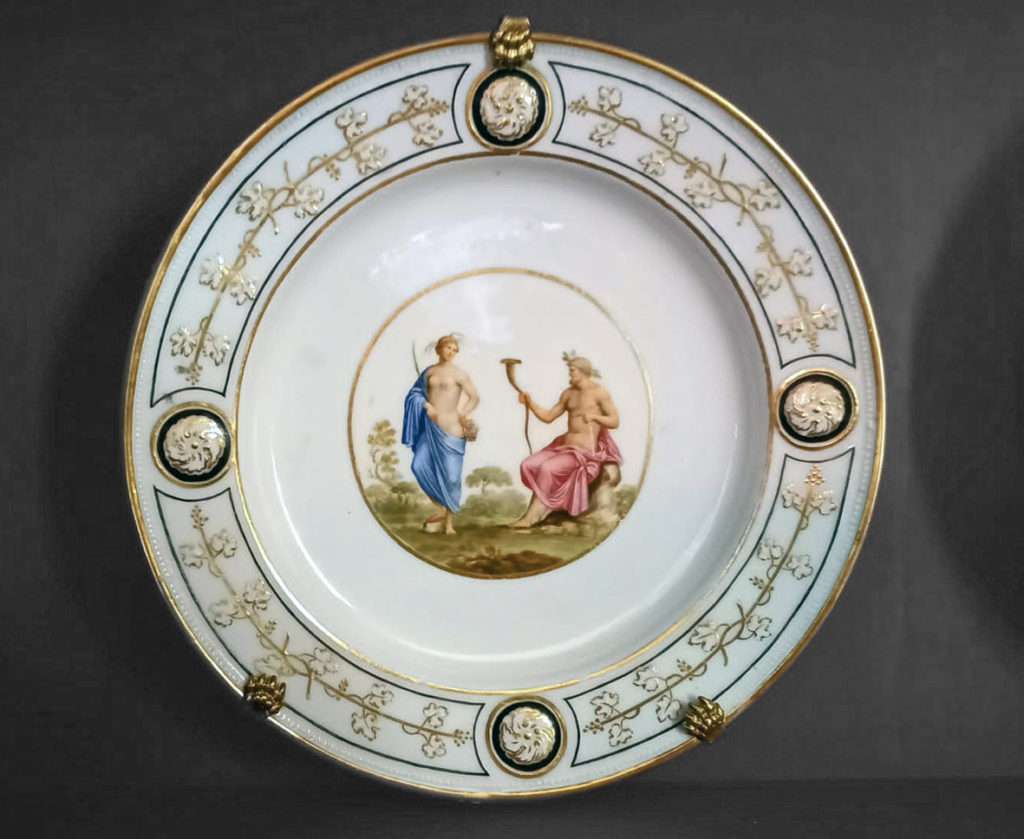
Porcelain from the Royal Ferdinandea Factory, 1790. Knife plate 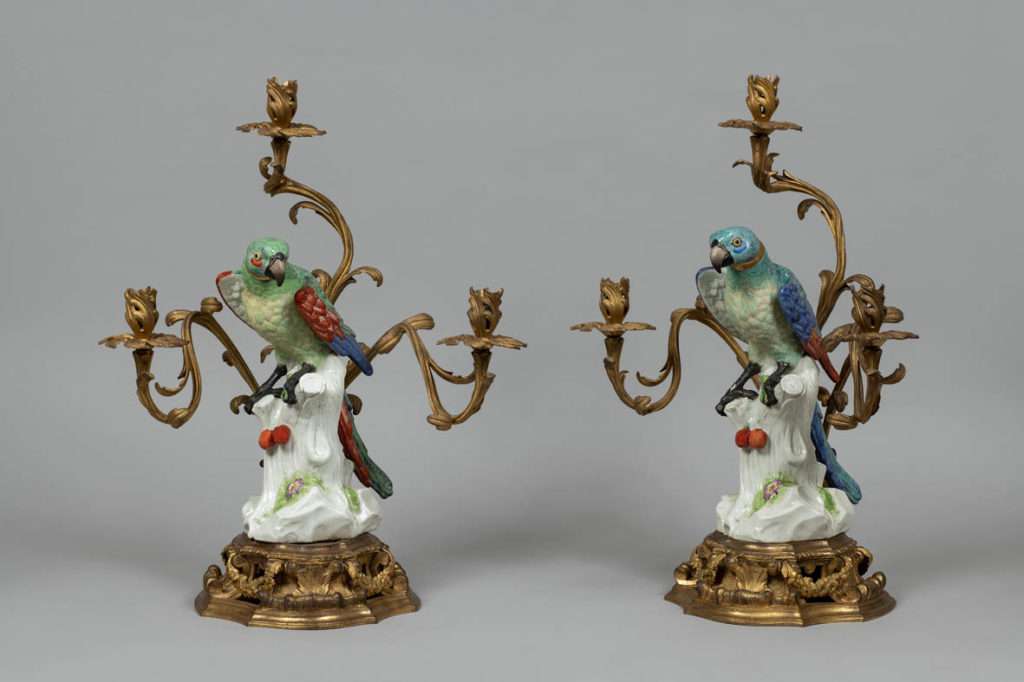
Meissen Manufacture - Kaendler Johann Joachim: Pair of candlesticks with Parrots, Porcelain / gilded bronze. candlestick no. 1: cm 55x42x29 Candlestick n. 2: 54×39.5×31.5 cm
The exhibition will be set up on the noble floor of the Reggia, following a subdivision by theme. It should be noted that in the same rooms, bare until a few years ago, part of the original furnishings have returned, recovered from the post-unification diaspora.
Alongside the porcelains, there will be portraits, letters and documents relating to the purchases of the Duchess and Prime Minister François Guillaume Leon Du Tillot, drawings of furniture and furnishings designed by Ennemond Alexandre Petitot, plans of the ducal palace of Colorno, books and engravings of celebrations and wedding of the dukes of Parma, but also the cookbooks used in the kitchens of the eighteenth century.
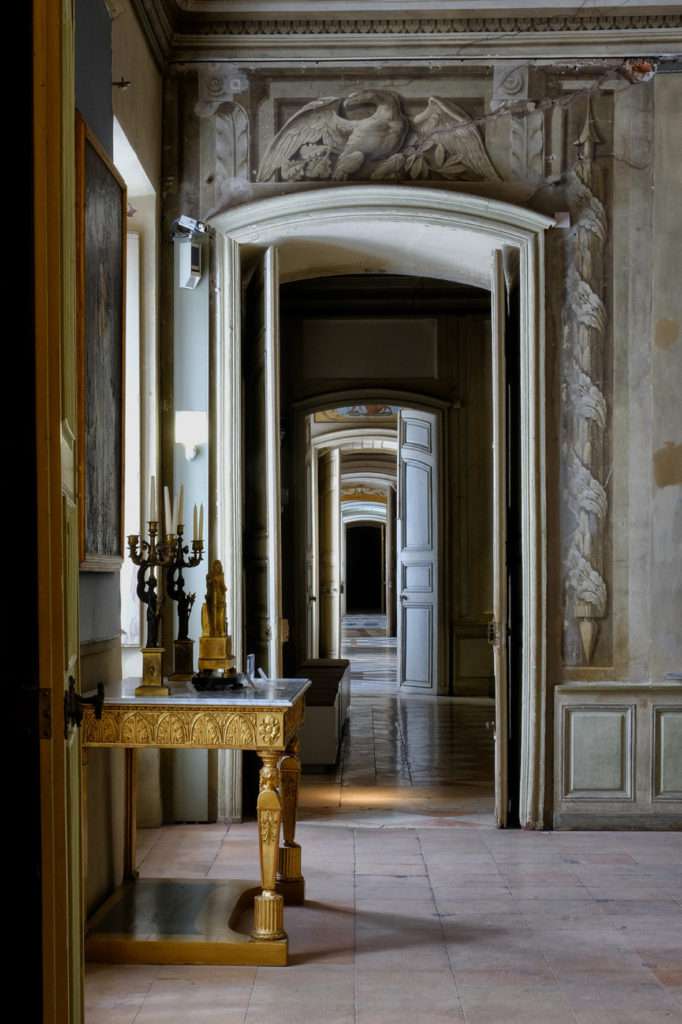
The review was born from the collaboration between the Province of Parma, the Uffizi Galleries of Florence and Antea and is promoted by the Province of Parma, the Municipality of Parma, the Municipality of Colorno and the Monumental Complex of Pilotta, the State Archives and the Archaeological Superintendency of Fine Arts and Landscapes for Parma and Piacenza. The exhibits come from the Palazzo del Quirinale, the Monumental Complex of the Pilotta in Parma, the Uffizi Galleries, the Museum of the Medici Villa in Poggio a Caiano, the Royal Museums of Turin, the Cariparma Foundation, the State Archives of Parma and private collectors.


